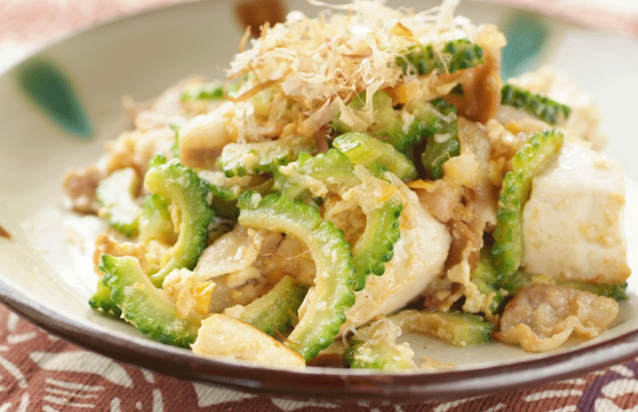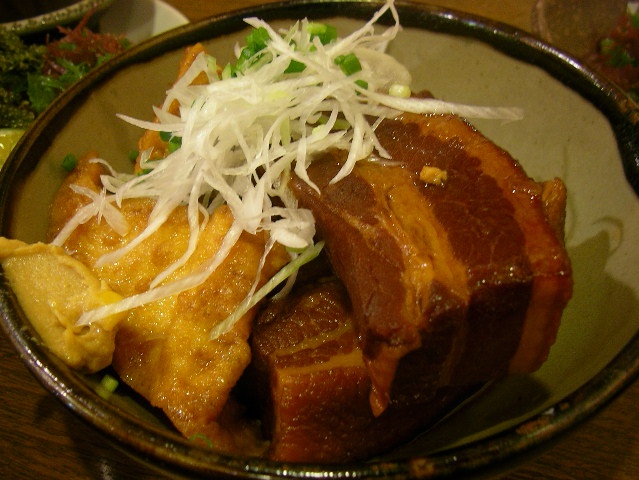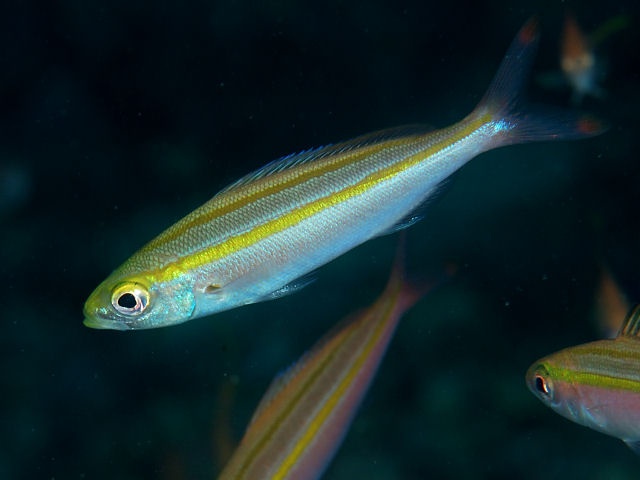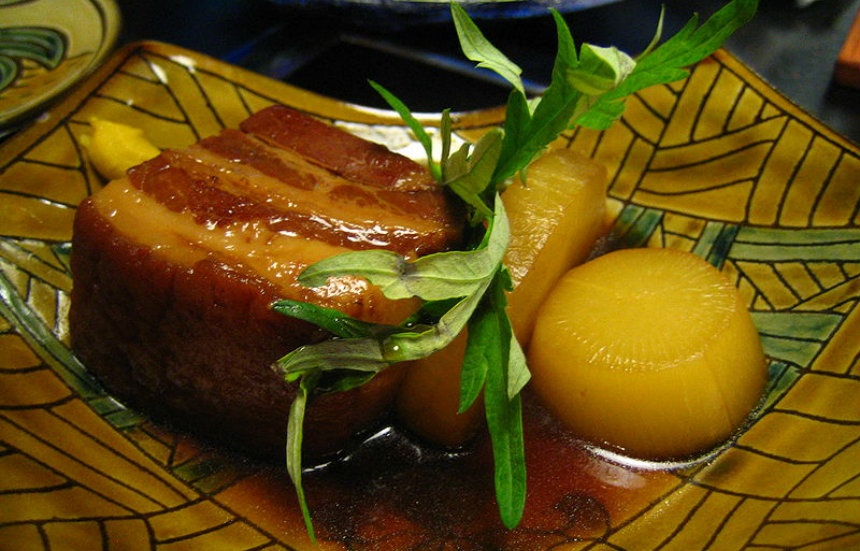A Quick Guide to Okinawan Cuisine

http://www.tokyoweekender.com/2015/11/okinawan-cuisine-mixing-it-up-and-keeping-it-fresh/
The first thing people will probably tell you about Okinawan food is it’s a bit of a champuru, “a mix” (much like the goya champuru dish pictured above). Or maybe they’ll launch in with the islands’ love affair with pork (which is deep). Or even how Okinawa soba is not like Japanese soba (wheat, as opposed to buckwheat). None of this would be wrong, of course. But the real pleasure of the local cuisine is the easy access to fresh vegetables and fruit that are unique, or mostly unique, to Okinawa alone.

http://www.tokyoweekender.com/2015/11/okinawan-cuisine-mixing-it-up-and-keeping-it-fresh/okinawan-food-goya-benimo/
Sweet mangos, pineapples and dragon fruit are ubiquitous when in season, and the main island grows many distinctive vegetables, such as nigana (common sowthistle), handama (Okinawa spinach), hechima (loofah), and the legendary benimo (sweet potato, even used in ice cream).
But goya (bitter melon) is perhaps the most famous of its grown produce (it’s even used as a mascot, combined with the mythical shisa (or lion dog) called Go-chan, who promotes healthy living and is popular even on the mainland these days. You’ll find this bitter, green pimply veggie in the cooked food you eat at restaurants, izakaya, and, of course, at supermarkets. But the cheapest place to pick up fresh goya and other produce is at the popular local farmers markets dotted all across the island.
You can also pick up fruit and vegetables even more directly from the farmers themselves. When passing by one of the many fields outside of the urban sprawl around Naha you’ll possibly come across a little unmanned stall, called mujinhanbai, with vegetables or fruit for sale. Don’t be shy: take some and pop the money in the box sitting by the side. All done on trust.

https://upload.wikimedia.org/wikipedia/commons/3/38/Rafute_by_jetalone_in_Ginza%2C_Tokyo.jpg
Ignoring the island’s peculiar addiction to Spam, that rubbery tinned meat much appreciated during the war, pork is dominant and reflects the Chinese influence on the cuisine, which for hundreds of years was greater than Japan’s. Among the classic dishes are rafute, a braised pork belly in soy sauce and brown sugar (from another famous crop in Okinawa, though not native). which, people in Okinawa say, is good for your skin and keeps you looking young, and tebichi, pig’s trotters, again cooked in brown sugar and soy sauce and with a bonito fish-flake dashi (broth). In fact, it’s the bonito fish-flake dashi that provides the famous umami (“flavor” in translation but so much more in practice), and means less salt is needed, making it healthier.
This “healthier way” is a common feature of traditional Okinawan food and has led to numerous books claiming the diet was responsible for Okinawa having the oldest living people in the world. It may or may not be the reason, but it will be interesting to see what happens to that longevity record when the McDonald’s and KFC generation starts getting long in the tooth.

https://upload.wikimedia.org/wikipedia/commons/5/57/Takasago.jpg
You might think, this being an island culture, that fish would be big here. But, in truth, mainland Japan still has much more to offer on the piscine front— for variety and creativity and, ultimately, flavor. However, local fish gurukun (a type of Pterocaesio fish) does make a great addition to any table—deep fried and very crispy or used in the dish maasumi, which actually can be used with any fresh, but usually white meat, fish. The fish is simmered in a pan with water, salt and the local alcohol, awamori.
As you’ll discover when you arrive on the island there are all sorts of taiken (experience) classes for tourists—diving, glass-making, pottery, horse riding, salt making, and even cooking. Take a few hours from your schedule to cook and eat with a local expert and you’ll be a veritable Okinawa food buff when you return to the metropolis.
Read full story: www.tokyoweekender.com




